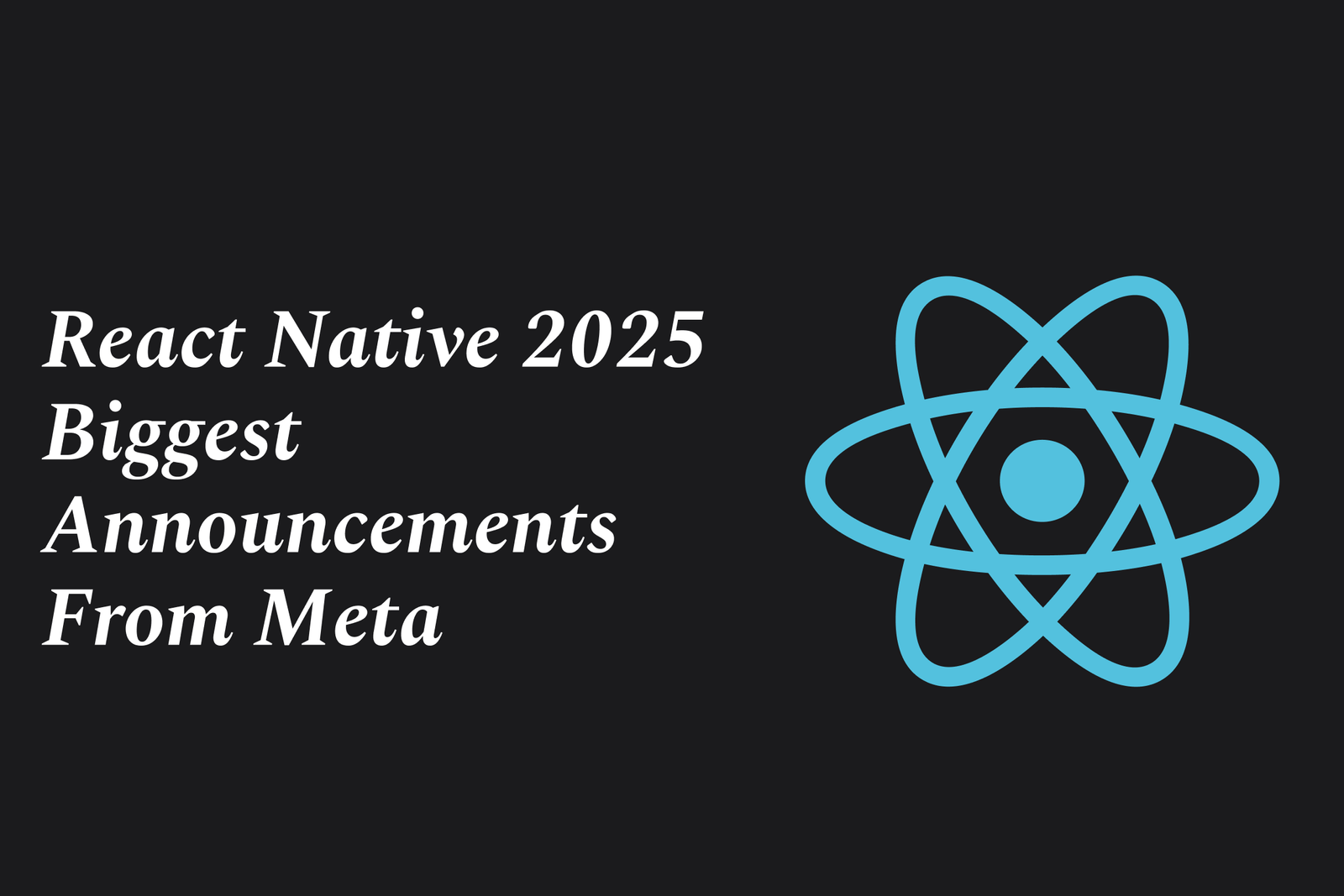The Rise of React Native in IoT Applications
The rise of React Native in IoT applications stems from its ability to create fast, cross-platform mobile apps with native performance, enabling seamless control and real-time interaction with connected devices, making it ideal for the growing demand in smart IoT and wearable tech solutions.
The Rise of React Native in IoT Applications
1 ) Introduction to IoT and Wearable Technology
The Internet of Things (IoT) is rapidly evolving from a futuristic idea to a $1 trillion global market in 2025.
IoT enables users to control and monitor connected devices such as smart thermostats and lighting systems via mobile apps.
Wearable technology, a key component of IoT, has grown from early calculator watches to modern fitness trackers and smartwatches, experiencing massive popularity.
2 ) Why React Native is Ideal for IoT App Development
React Native is a powerful cross platform framework enabling developers to build mobile apps that run smoothly on both iOS and Android from a single codebase.
It supports real time data processing, device integration, and offers responsive, native like performance for managing smart IoT devices.
React Native is well suited to meet the increasing demand for IoT and wearable app development by providing faster deployment and easier maintenance.
3 ) Core Features of IoT App Development
IoT apps act as the interface between users and connected devices, handling:
Real time data streaming and processing
Secure communication protocols between devices and apps
User friendly, intuitive interfaces
Cross platform device compatibility
4 ) Advantages of Using React Native for IoT Applications
Cross Platform Compatibility: Build apps that function uniformly on both Android and iOS, expanding reach with a single development effort.
Faster Development Cycles: Single codebase reduces development time and speeds up the time to market.
Native Performance: Access to native APIs ensures responsive and fluid user interactions even with complex device controls.
5 ) Getting Started with React Native in IoT
Developers should set up Node.js, npm, and React Native CLI along with necessary IoT communication libraries like Bluetooth or Wi Fi.
Designing user interfaces should focus on real time updates and device status indicators, leveraging React Native’s component based architecture.
Implementation involves integrating device communication, managing connectivity events, and creating controls (toggles, sliders, buttons) for device interaction.
6 ) Testing and Deployment
Rigorous testing across different devices and platforms is critical to ensure reliability, including unit and integration tests.
Deployment requires compliance with app store policies and proper documentation to reach users on Apple App Store and Google Play Store.
7 ) Conclusion
React Native stands out as a strategic choice for developing scalable, high performance IoT and wearable technology applications.
Its ability to simplify development while delivering native like user experiences paves the way for innovative, connected apps that enhance how users interact with smart devices.
Leveraging React Native empowers developers and businesses to capitalize on the booming IoT market by building smarter, real time connected solutions.
https://justacademy.in/news-detail/ui-testing-in-flutter:-what's-new?
https://justacademy.in/news-detail/flutter-4-migration-guide-for-teams
https://justacademy.in/news-detail/react-native-for-startups:-a-smart-choice
https://justacademy.in/news-detail/react-native?s-secret-sauce-for-lightning-fast-startups
https://justacademy.in/news-detail/flutter-adds-ai-toolkit:-what-it-means-for-developers
Related Posts
Java supports GDPR and data privacy by enabling secure data handling through encryption, controlled access, and precise data management. It allows developers to minimize PII exposure, ensure data confidentiality, and design workflows that comply with data protection regulations effectively.
Java code quality tools have evolved to include advanced static analysis, integrated security checks, and AI-powered code reviews. These updates help developers detect bugs, enforce coding standards, and enhance security, streamlining the development process and improving overall code reliability.
Java remains a cornerstone in big tech companies, evolving with modern features like records, pattern matching, and virtual threads. Its robust ecosystem, enhanced performance, and growing AI integrations keep it vital for both legacy systems and innovative new projects.
Java and CI/CD pipeline optimizations streamline Java application development by automating builds, tests, and deployments. They improve efficiency through parallelization, caching, and secure secrets management, enabling faster feedback loops and more reliable, scalable software delivery.
Java supports modern cryptography standards through its flexible Java Cryptography Architecture (JCA), enabling integration of advanced algorithms like AES, EdDSA, and post-quantum tools. Libraries like Bouncy Castle offer FIPS-certified, hardware-accelerated implementations for secure development.
Java 23 enhances record patterns by enabling concise, direct destructuring of record components within pattern matching, simplifying type checks and data extraction. This improvement boosts code readability and expressiveness by reducing boilerplate in handling immutable data classes.
Java remains a top choice for mobile app backends, powering scalable, secure, and high-performance server-side solutions. Latest trends include cloud-native microservices, reactive programming, and enhanced JVM optimizations, enabling efficient, flexible, and robust mobile backend development.
Java SE 24 and LTS Java SE 21 offer enhanced features and performance, while Apache Spark 4.0.0 introduces Scala 2.13 support and advanced ML and SQL capabilities. Together, they empower developers to build scalable, high-performance data applications with modern tools.
JUnit 5 modernizes Java testing with a modular architecture, improved assertions, and seamless Java 8+ support. Beyond JUnit, tools like Mockito and AssertJ enhance mocking and assertions, creating a powerful, flexible ecosystem for writing clean, efficient Java unit tests.
Java plays a pivotal role in cloud automation tools by providing a robust, platform-independent language used to build scalable automation frameworks like Jenkins and Selenium, enabling efficient CI/CD pipelines, testing, and orchestration across diverse cloud environments.










